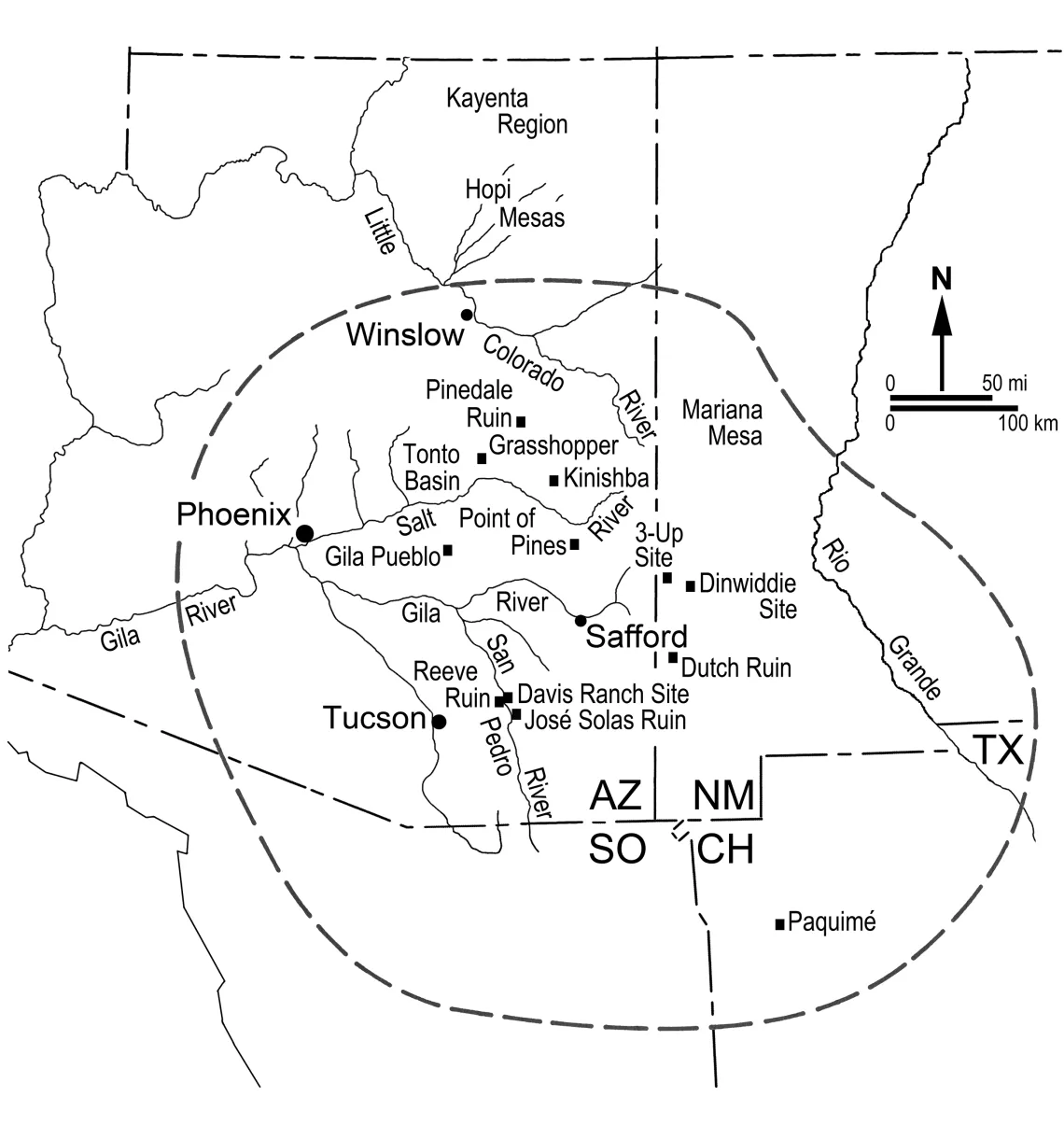
Map of Arizona, western New Mexico, northern Sonora, and northern Chihuahua, showing locations of sites and areas discussed in the text. Base map drawn by Ronald J. Beckwith. Dashed line (after Crown 1994:Figure 1.1) indicates the known distribution of Roosevelt Red Ware (Salado polychrome pottery).
Kayenta migration into southern Arizona 1250-1300 CE (CE = AD)
Due to a combination of environmental and social stresses during the late 1200s, large parts of the Four Corners region (where the modern states of Arizona, New Mexico, Colorado, and Utah meet) were depopulated. The western portion of this area (far northeastern Arizona and southeastern Utah) is referred to as the Kayenta region. Ancestral Pueblo groups (formerly referred to as Anasazi) who inhabited the Kayenta region moved southward into many already inhabited portions of Arizona, New Mexico, and northern Mexico. Some joined extant communities on the Hopi Mesas (within what is currently the Hopi Indian Reservation) and others pushed farther south into the Little Colorado River Valley (the Silver Creek drainage, near Pinedale, Snowflake, and Show Low; and the Upper Little Colorado, near St. Johns and Springerville, in Arizona, and as far east as the area around Quemado, New Mexico), lands that are now part of the White Mountain Apache Tribe's Fort Apache Indian Reservation (at Kinishba, Grasshopper Pueblo, and other villages), the Tonto Basin, the Globe-Miami area, the Phoenix Basin, the San Carlos Apache Tribe's San Carlos Indian Reservation (at Point of Pines), the Upper Gila River Valley (the Duncan-Virden-Redrock area, the Mule Creek area, and the Cliff Valley), the Safford Basin (at the Goat Hill Site and others), the San Pedro River Valley (at the Davis Ranch Site, Reeve Ruin, and other settlements), the Aravaipa Creek area, the Tucson Basin (at University Indian Ruin and other villages), the Sulphur Springs Valley, and even as far as Paquimé (Casas Grandes), in northwestern Chihuahua.
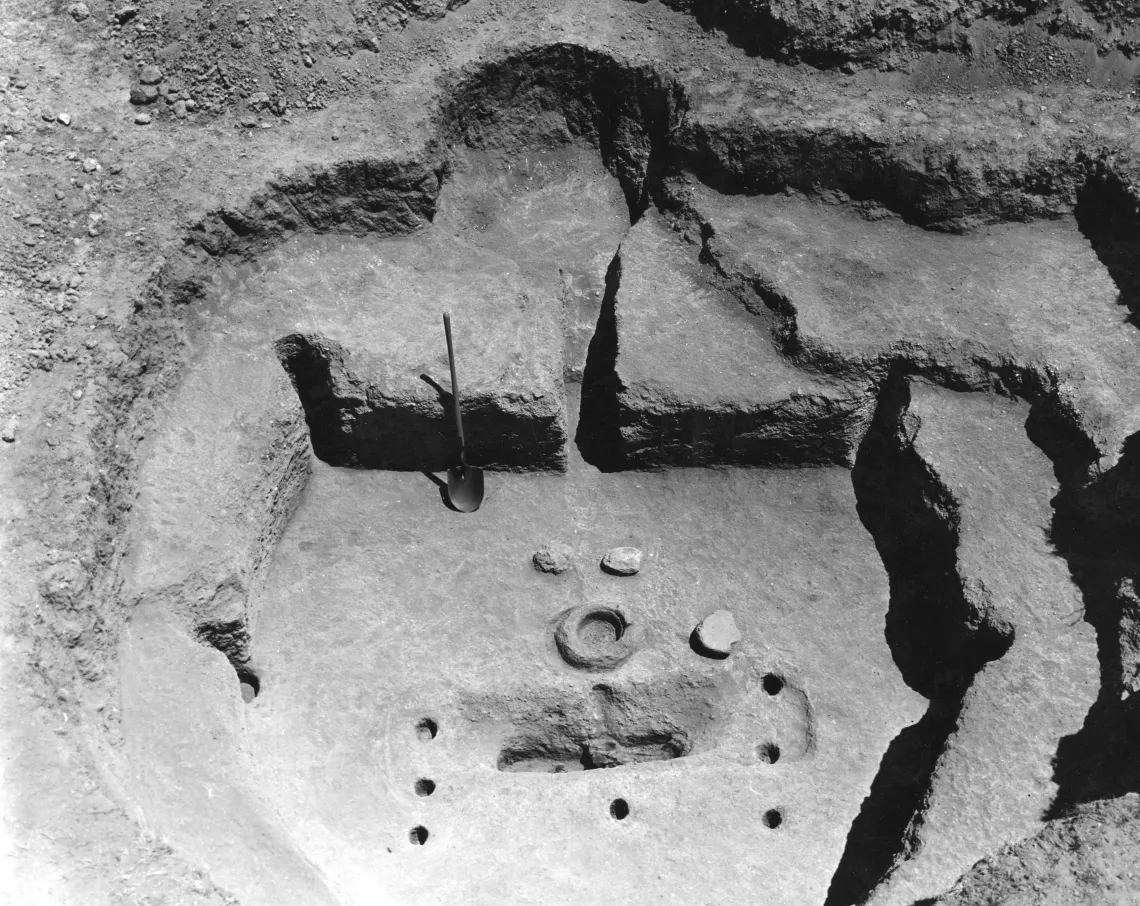
D-shaped, Kayenta-style kiva (subterranean ceremonial room) at Point of Pines Pueblo (AZ W:10:50[ASM]). ASM Negative No. 2618.
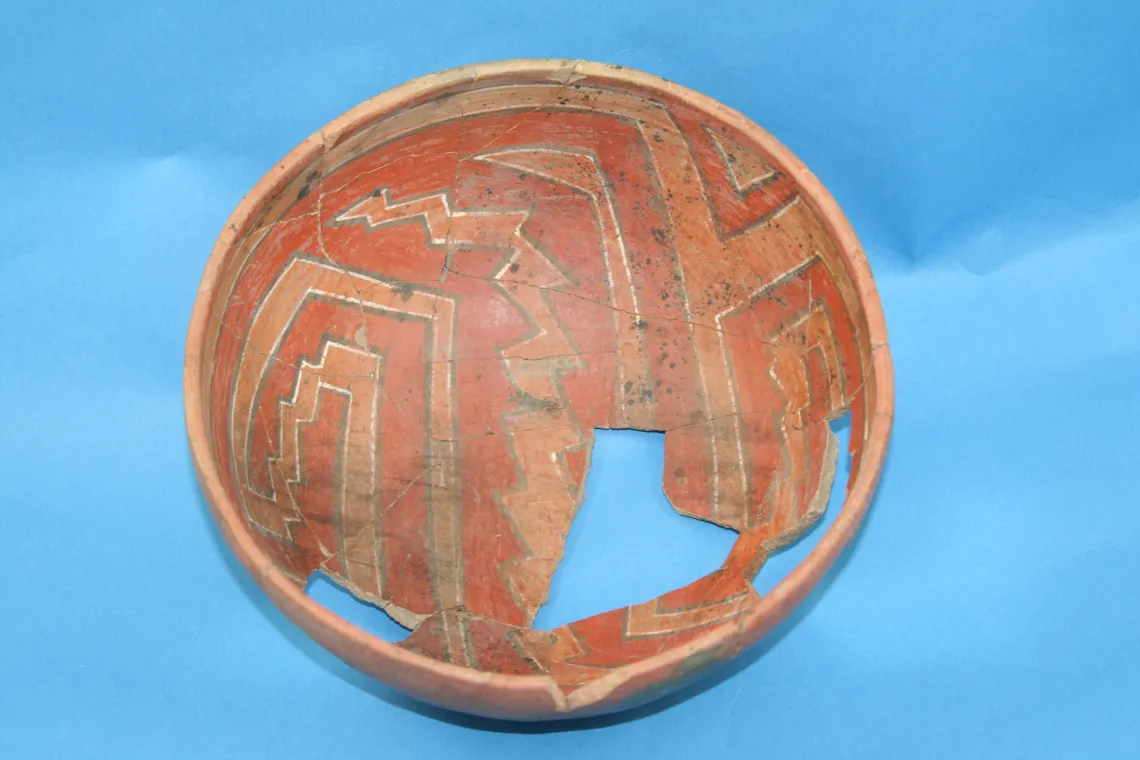
Maverick Mountain Polychrome (Kayenta pottery produced at Point of Pines) bowl (ASM Catalog No. A-36241) recovered from Point of Pines Pueblo (AZ W:10:50[ASM]).
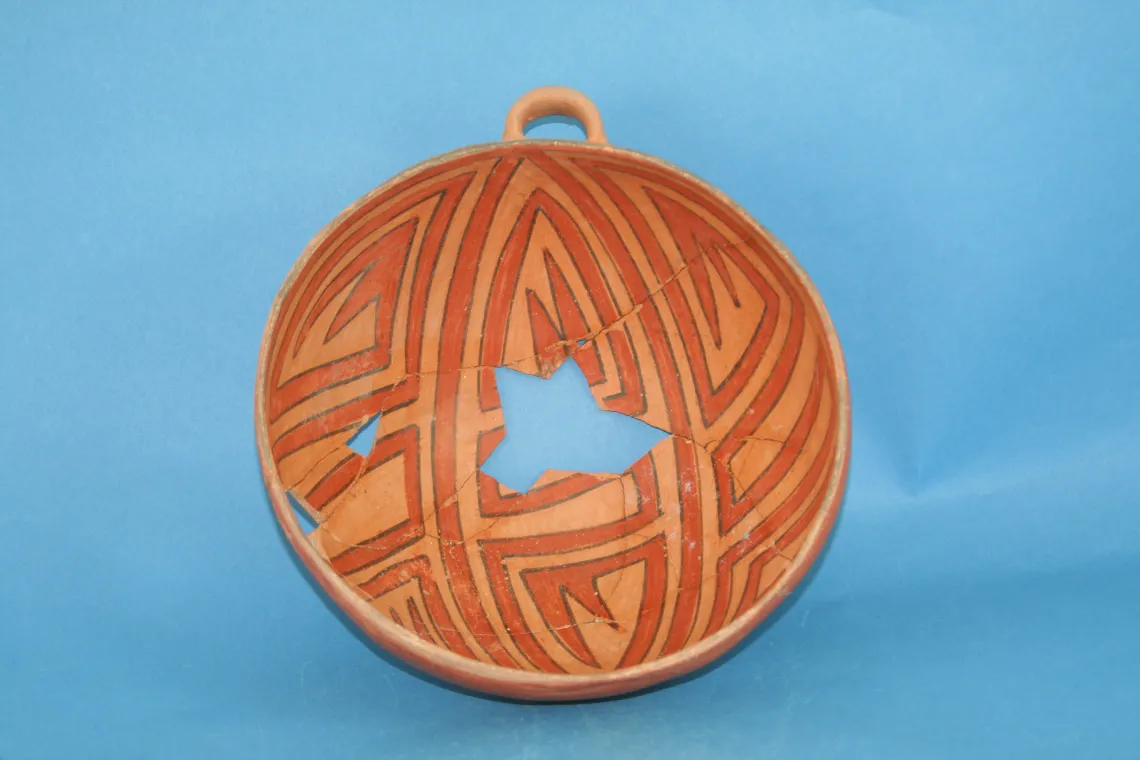
Tusayan Polychrome (a type of pottery made in the Kayenta region) bowl (ASM Catalog No. GP6071) recovered from Turkey Tank Ruin (AZ I:15:45[ASM]), east of Flagstaff, Arizona.
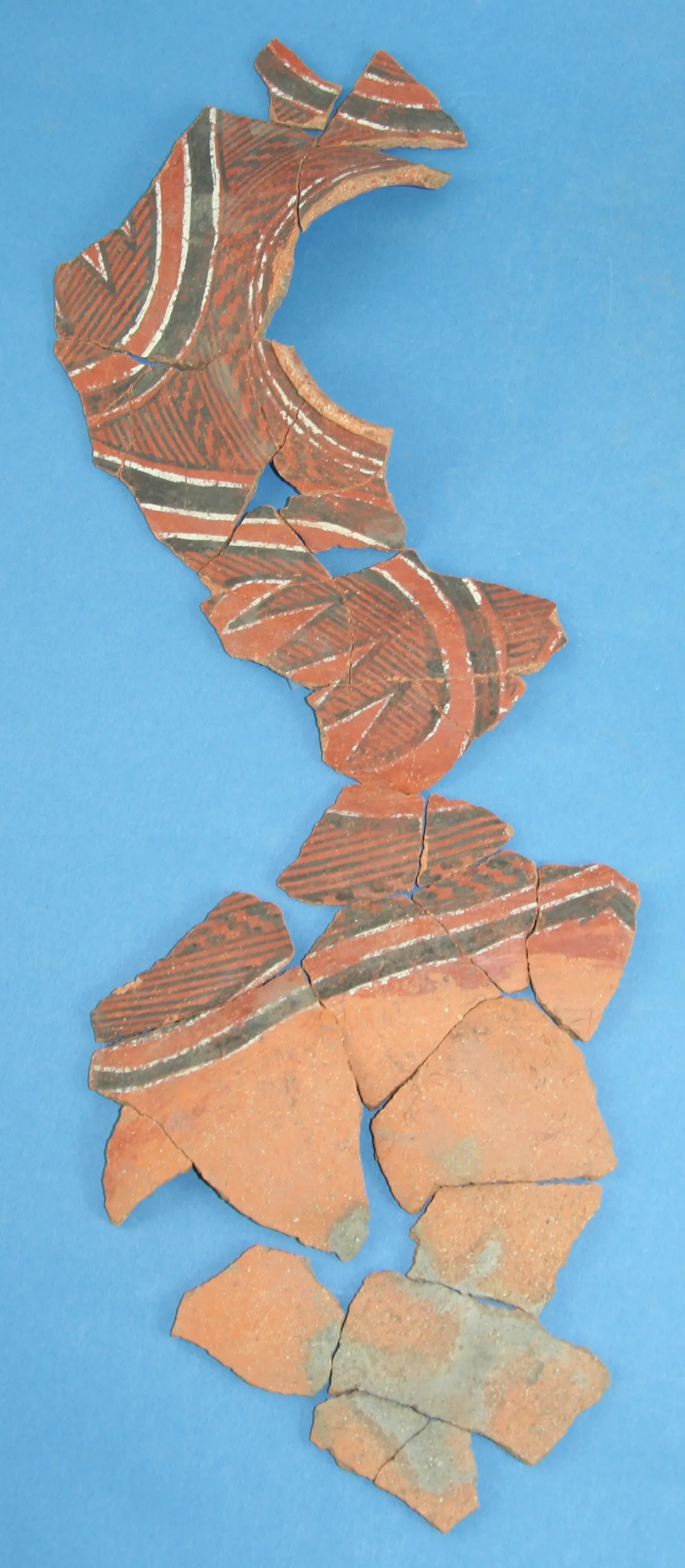
Partially reconstructible Kiet Siel Polychrome (a type of pottery made in the Kayenta region) jar (uncatalogued) recovered from the D-shaped, Kayenta-style kiva at Point of Pines Pueblo (AZ W:10:50[ASM]).

Perforated plate fragments recovered from the D-shaped, Kayenta-style kiva at Point of Pines Pueblo (AZ W:10:50[ASM]).
The presence of immigrants from the Kayenta region in all of these places can be inferred based on material traces of the distinctive traditions (ways of making and doing things) they brought southward with them. The newcomers stood out in terms of aspects of their domestic architecture, ceremonial architecture, pottery, stone tools, and their treatment of the dead. Important indicators of Kayenta immigrants in the southern US Southwest include pueblo-style room-block architecture, kivas (subterranean ceremonial structures), perforated ceramic plates (Kayenta pottery-making tools; they were used as base molds and potters' turntables), Maverick Mountain Series pottery (pottery made using the technology, decorative style, and vessel forms characteristic of the Kayenta region, but with raw materials available locally in the south), and burial of the deceased in a flexed position (laying on the left or right side and with the knees bent and drawn up toward the chest). All available evidence leads to the conclusion that these newcomers from the north were responsible for both the development and the spread of Roosevelt Red Ware (Salado polychrome pottery), which largely replaced most local decorated pottery traditions in the south after circa 1350 CE.
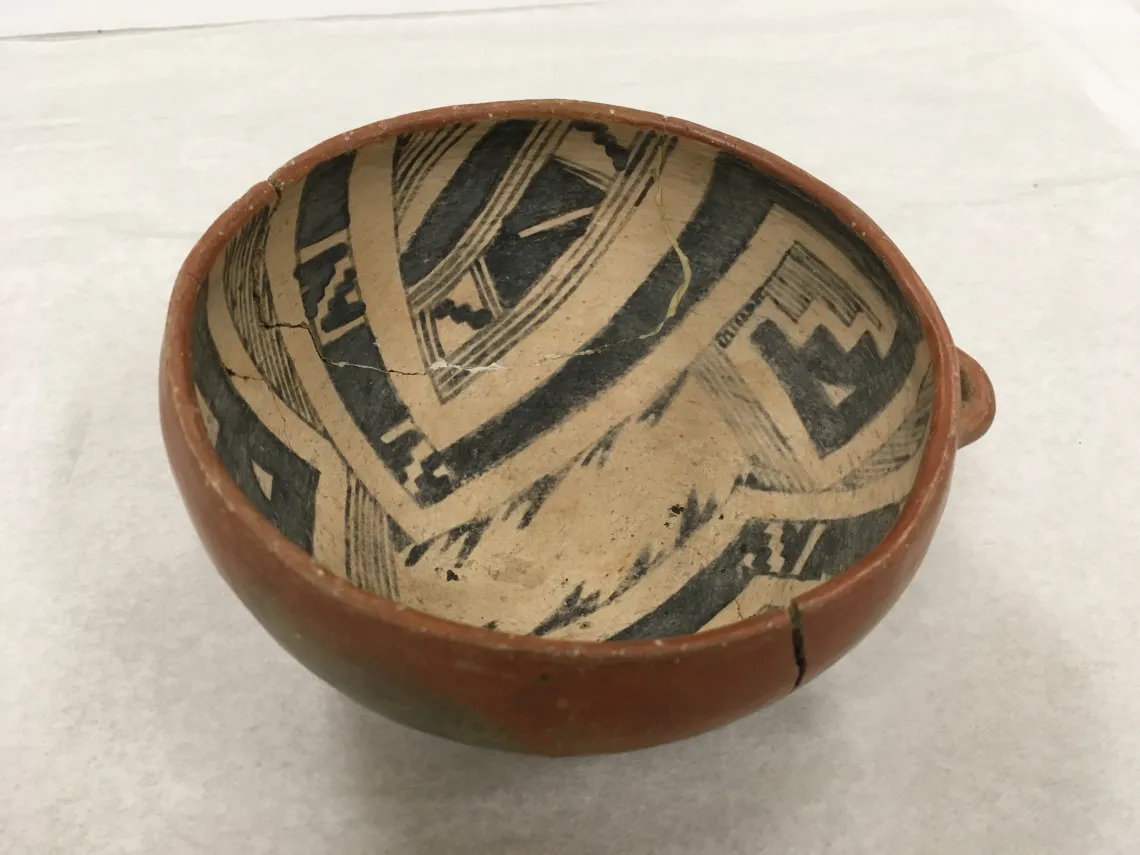
Pinto Polychrome (Roosevelt Red Ware/Salado polychrome) bowl (GP49019) recovered from Keystone Ruin (Roosevelt:6:3[GP]), in the Tonto Basin.
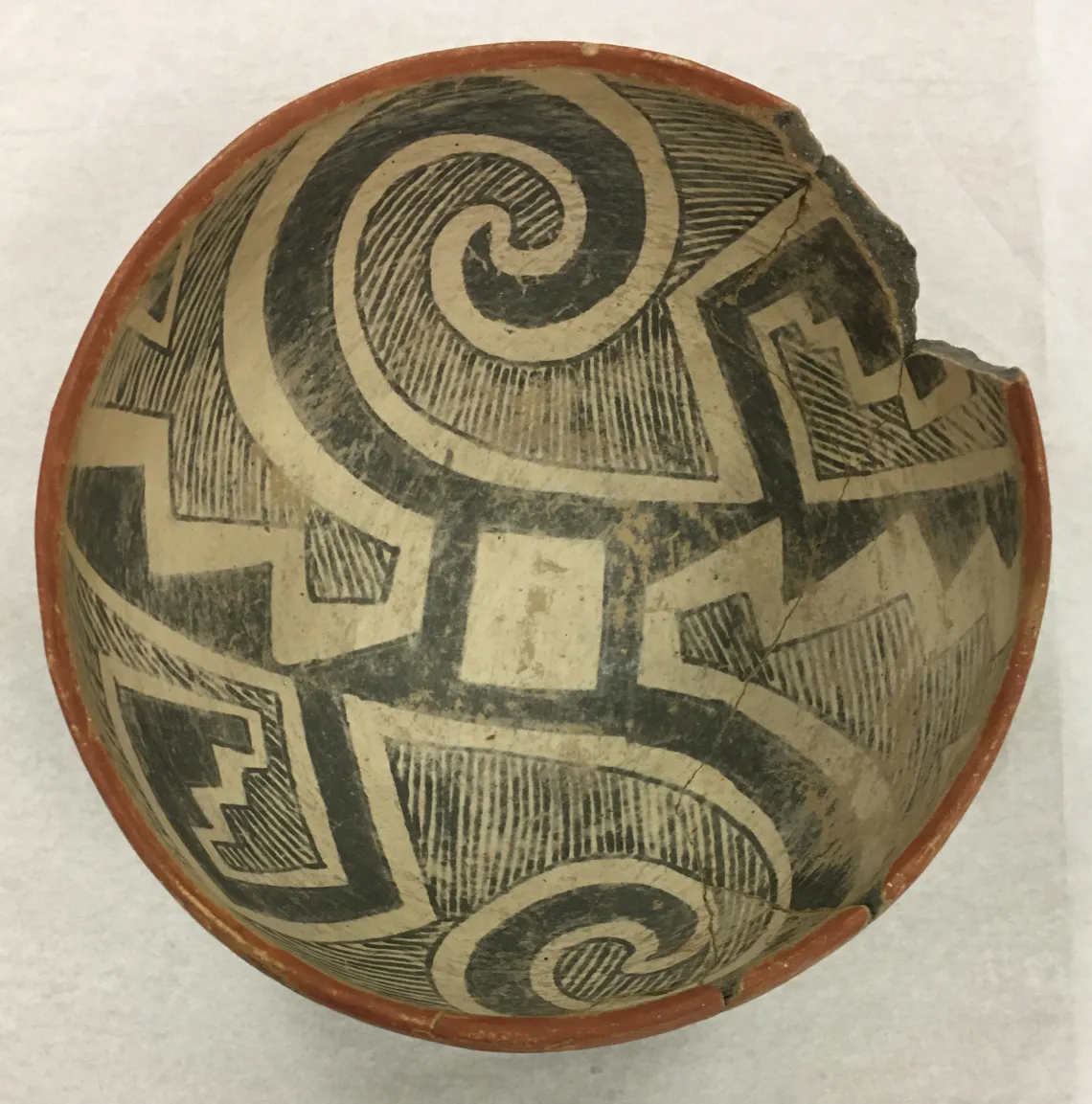
Pinto Polychrome (Roosevelt Red Ware/Salado polychrome) bowl (A-28187) recovered from Grasshopper Pueblo (AZ P:14:1[ASM]).
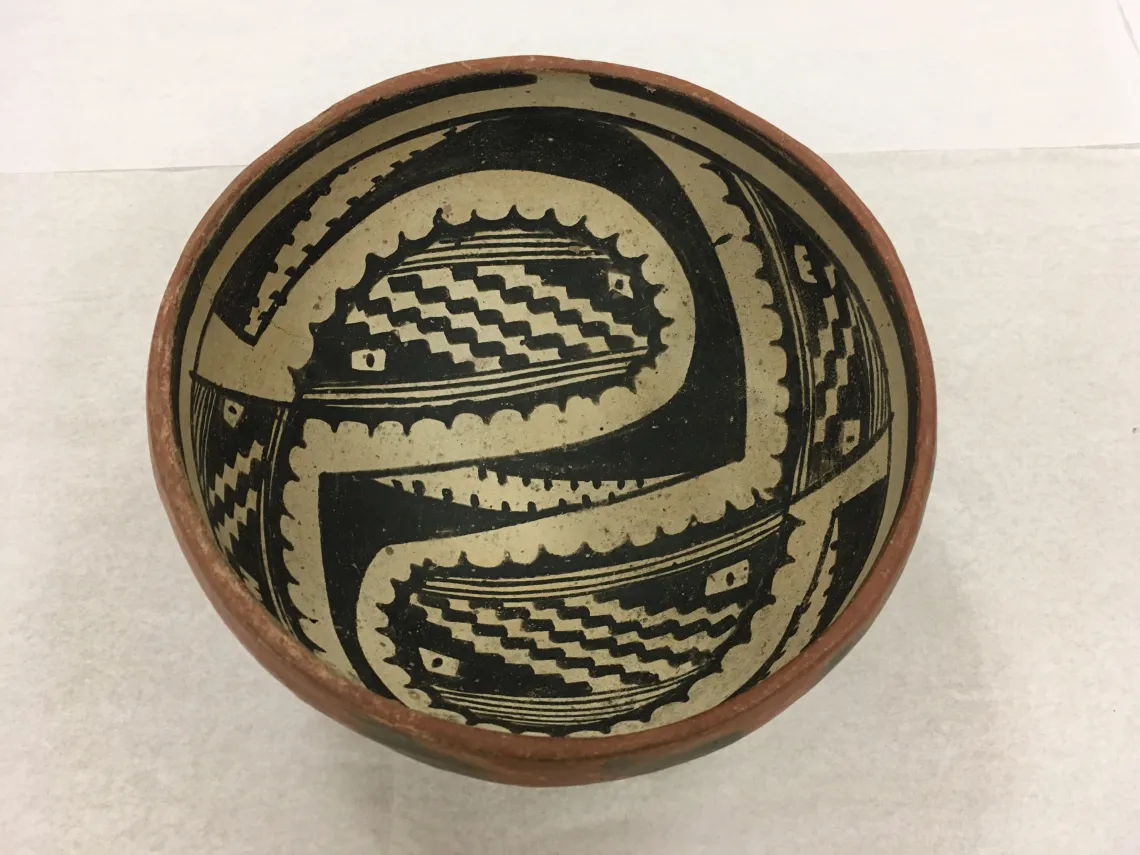
Gila Polychrome (Roosevelt Red Ware/Salado polychrome) bowl (GP49022) recovered from Keystone Ruin (Roosevelt:6:3[GP]), in the Tonto Basin.
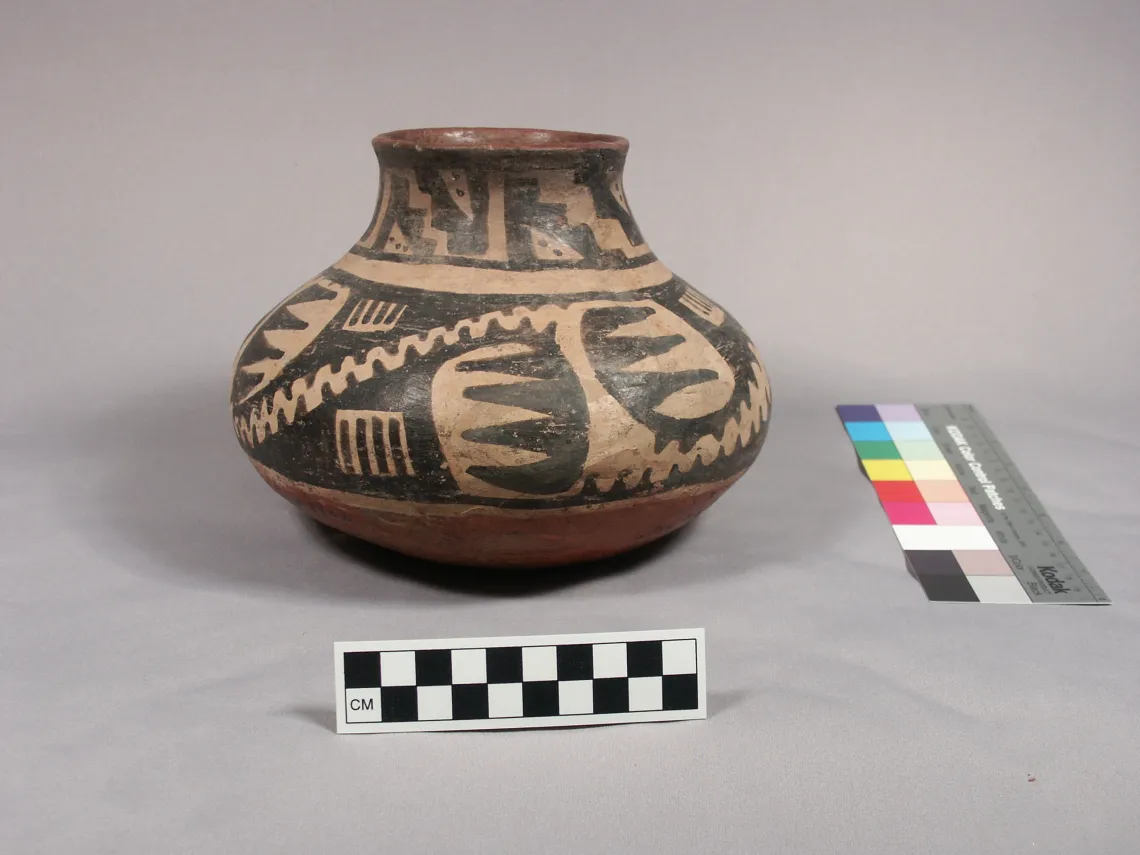
Gila Polychrome (Roosevelt Red Ware/Salado polychrome) jar (GP8702) recovered from Gila Pueblo (AZ V:9:52[ASM]), in the Globe-Miami area.
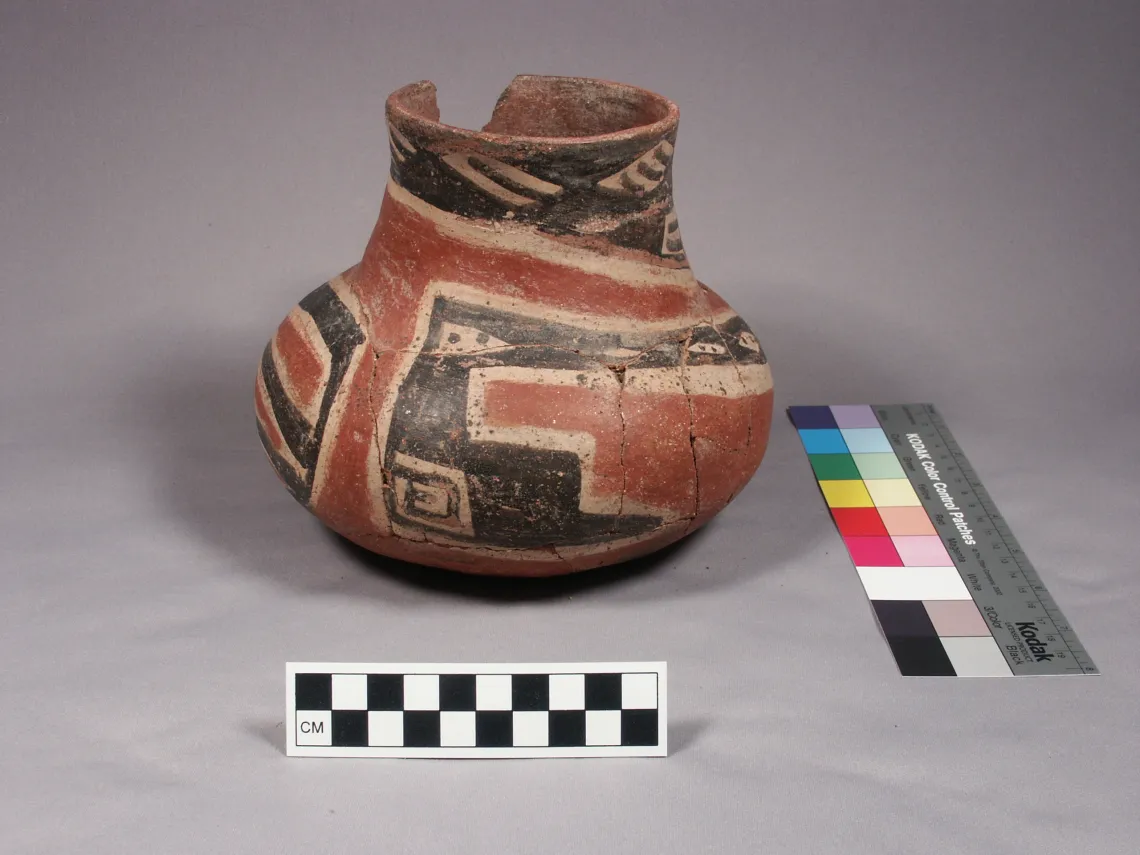
Tonto Polychrome (Roosevelt Red Ware/Salado polychrome) jar (82-45-85) recovered from Gila Pueblo (AZ V:9:52[ASM]), in the Globe-Miami area.
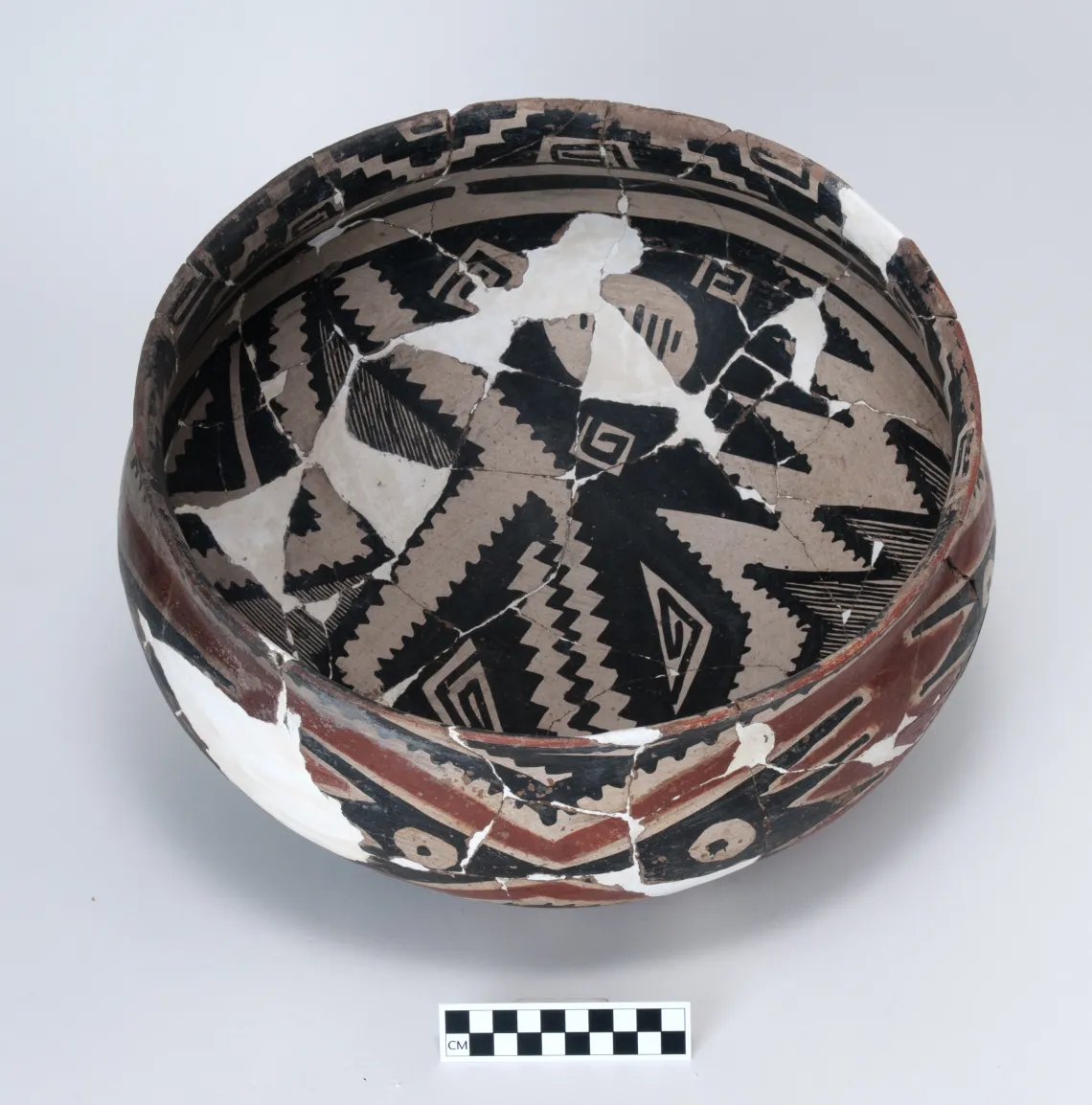
Cliff Polychrome (Roosevelt Red Ware/Salado polychrome) bowl (23705) recovered from Kinishba (AZ V:4:1[ASM]).
For further reading:
Clark, Jeffery J., and Patrick D. Lyons (editors)
2012 Migrants and Mounds: Classic Period Archaeology of the Lower San Pedro Valley. Anthropological Papers No. 45. Archaeology Southwest, Tucson.
Crown, Patricia L.
1994 Ceramics and Ideology: Salado Polychrome Pottery. University of New Mexico Press, Albuquerque.
Lindsay, Alexander J., Jr.
1987 Anasazi Population Movements to Southeastern Arizona. American Archeology 6(3):190-198.
Lyons, Patrick D.
2003 Ancestral Hopi Migrations. Anthropological Papers of the University of Arizona No. 68. University of Arizona Press, Tucson.
2004 José Solas Ruin. Kiva 70(2):143-181.
2010 Norton Allen’s Excavations in the San Pedro and Dripping Spring Valleys of Southeastern Arizona. Journal of the Southwest 52(2-3):323-361.
2013 "By their fruits ye shall know them": The Pottery of Kinishba Revisited. In Kinishba Lost and Found: Mid-Century Excavations and Contemporary Perspectives, edited by John R. Welch, pp. 145-208. Arizona State Museum Archaeological Series No. 206. Arizona State Museum, University of Arizona, Tucson.
2013 Maverick Mountain Series and Salado Polychrome Origins. Archaeology Southwest 26(3-4):13-15.
2013 Pottery Traditions in and Beyond the Homeland. Archaeology Southwest 27(3):9-11.
2015 A Behavioral Archaeology of Ancient Migrations. In Explorations in Behavioral Archaeology, edited by William H. Walker and James M. Skibo, pp. 37-51. University of Utah Press, Salt Lake City.
2016 Kinishba's Pottery Revisited. Archaeology Southwest 30(1):20-23.
Lyons, Patrick D. (editor)
2019 The Davis Ranch Site: A Kayenta Immigrant Enclave in Southeastern Arizona, by Rex E. Gerald. University of Arizona Press, Tucson.
Lyons, Patrick D., and Jeffery J. Clark
2012 A Community of Practice in Diaspora: The Rise and Demise of Roosevelt Red Ware. In Potters and Communities of Practice: Glaze Paint and Polychrome Pottery in the American Southwest A.D. 1250-1700, edited by Linda S. Cordell and Judith Habicht-Mauche, pp. 19-33. Anthropological Papers of the University of Arizona No. 75. University of Arizona Press, Tucson.
Lyons, Patrick D., and Alexander J. Lindsay, Jr.
2006 Perforated Plates and the Salado Phenomenon. Kiva 72(1):5-54.
Neuzil, Anna A.
2008 In the Aftermath of Migration: Renegotiating Ancient Identity in Southeastern Arizona. Anthropological Papers of the University of Arizona No. 73. University of Arizona Press, Tucson.
Woodson, M. Kyle
1999 Migrations in Late Anasazi Prehistory: The Evidence from the Goat Hill Site. Kiva 65(1):63-84.





